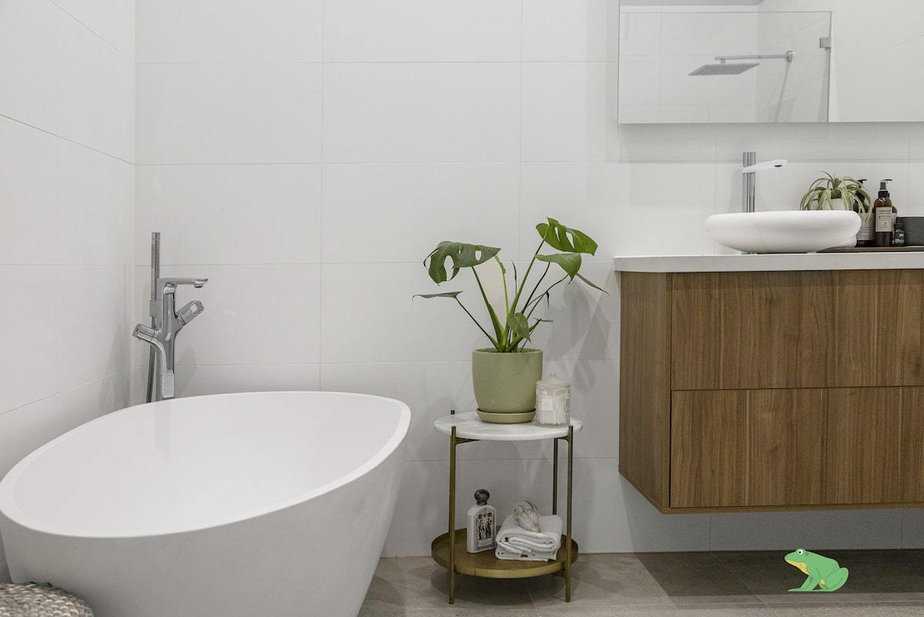
Have you ever found yourself in a situation where you have a frog in your house and you have no idea how to catch it? Don’t panic! With the right techniques and a little bit of patience, you can safely catch the frog and release it back into its natural habitat.
Next, you’ll need to gather your tools. You can use a net or a container to catch the frog. If you don’t have these items, don’t worry! A towel or a cardboard box will also work. Just make sure that whatever you use is large enough to contain the frog but not so large that it can easily escape.
When you’re ready to catch the frog, approach it slowly and calmly. Frogs are often more scared of humans than we are of them, so any sudden movements may cause them to panic and jump away. Use the element of surprise to your advantage and gently cover the frog with the net, container, towel, or box. Be careful not to harm the frog in the process.
Remember, catching a frog in your house can be a daunting task, but with these effective techniques, you can safely and humanely remove the frog and return it to where it belongs. Just stay calm, be patient, and handle the frog with care.
How to Locate a Frog in Your House
Having a frog unexpectedly enter your house can be a surprise for many homeowners. The first step in getting rid of the frog is to locate its whereabouts. Here are some effective techniques for finding the frog in your house:
1. Listen for croaking: Frogs make a distinct croaking sound, especially during mating season. Try to listen carefully for any croaking sounds, which can help you pinpoint the frog’s location.
2. Follow the sound: Once you hear the croaking sound, trace its source and move in that direction. Frogs are often attracted to sources of water, so check areas such as bathrooms, kitchens, and laundry rooms.
3. Look for visual cues: Frogs can be difficult to spot, especially if they are small or well-camouflaged. Look for any movement or unusual shapes in the room. Frogs may hide in corners, under furniture, or behind household items.
4. Check humid areas: Frogs thrive in moist environments, so check humid areas such as basements or crawl spaces. They may also seek shelter in potted plants or near windows with condensation.
5. Use a flashlight: If the frog is hiding in a dark area, use a flashlight to illuminate the space. The light may startle the frog, causing it to move and reveal its location.
How to Safely Capture a Frog in Your House
Catching a frog in your house might seem like a challenging task, but with the right techniques, it can be done safely and effectively. Here are some steps to follow:
1. Stay Calm and Observant
2. Prepare Your Equipment
Before attempting to catch the frog, gather the necessary equipment. You will need a container with a lid, such as a plastic cup or a small bucket, and a piece of cardboard or stiff paper to use as a makeshift lid.
3. Approach the Frog Carefully
Slowly and gently approach the frog. Quick movements may startle it and cause it to jump away. As you get closer, make sure to keep an eye on the frog’s movements and position yourself in a way that will allow for an easy capture.
4. Use a Catch and Release Technique
To catch the frog, place the container over it in one swift motion. Be careful not to hurt the frog or trap its limbs. Once the frog is inside the container, slide the piece of cardboard or stiff paper under the container to create a lid. This will prevent the frog from escaping.
5. Release the Frog
Now that you’ve successfully caught the frog, it’s time to release it back into its natural habitat. Choose a safe location outside, such as a garden or a pond, and gently remove the lid of the container. Allow the frog to hop out and make its way back into the wild.
Preventing Future Frog Intrusions
1. Seal Entry Points
The first step in preventing future frog intrusions is to seal any potential entry points. Inspect your house for gaps, cracks, or holes in doors, windows, and walls. Use caulk or weatherstripping to seal these openings and prevent frogs from entering your home.
2. Remove Attractants
Frogs are attracted to moisture and insects, so eliminating these attractants will make your house less appealing to them. Fix any plumbing leaks or moisture issues, as frogs are drawn to damp environments. Keep outdoor lights off at night to reduce the presence of insects around your house.
3. Keep Your Yard Clear
Regularly maintain your yard by mowing the grass, trimming bushes, and removing any piles of debris or clutter. Frogs are more likely to inhabit areas with tall grass or hiding spots, so keeping your yard clean and well-kept will discourage them from approaching your house.
4. Install Mesh or Screens

To further prevent frogs from entering your house, consider installing mesh or screens on doors, windows, and vents. This will create a physical barrier and block their access. Make sure the mesh or screens are in good condition and do not have any gaps or tears that frogs could squeeze through.
5. Use Frog Repellents
There are specific frog repellents available in the market that can be used as an additional measure to deter frogs from entering your house. These repellents usually contain natural ingredients that emit strong odors that frogs find unpleasant. Follow the instructions on the repellent product carefully to ensure proper usage.
By following these preventive measures, you can significantly reduce the chances of frogs entering your house. Remember to regularly inspect and maintain your house to ensure that there are no new entry points for frogs. If despite your efforts, frog intrusions persist, it is advisable to seek professional help to assess the situation and implement additional measures if necessary.
Calling for Professional Help
If you have tried all the techniques mentioned above and still cannot catch the frog in your house, it may be time to call for professional help. Professionals who have experience in dealing with frogs will know the most effective methods to safely catch and remove the frog from your home.
When calling for professional help, be prepared to provide them with information about the frog and its whereabouts in your house. This will help them determine the best approach to catch the frog without causing harm to you or the frog.
There are several ways to find professionals who specialize in catching frogs. You can search online for pest control companies or wildlife control services in your area. Make sure to read reviews and check their credentials before making a final decision.
When contacting the professionals, explain the situation and ask for a quote for their services. They may need to visit your house to assess the situation before providing an accurate estimate. Once you have received quotes from a few different professionals, compare their prices and services to make an informed decision.
- Search for pest control companies or wildlife control services online.
- Read reviews and check their credentials before making a final decision.
- Contact the professionals and explain the situation.
- Ask for a quote and compare prices and services.
- Choose a professional who has experience in catching and removing frogs.
By following these steps, you can ensure that the frog in your house is caught safely and effectively, without causing harm to yourself or the frog. Remember to take preventive measures to reduce the likelihood of future frog intrusions, such as sealing any gaps or openings in your home that may serve as entry points for frogs.

I’m Lena Adams—a product of an unconventional upbringing in the African wilderness. My father, a daring explorer of African wildlife, sparked my fascination with reptiles, a passion that intertwined with the tragic loss of my mother during an expedition, leaving an indelible mark on my life. Driven to understand the creatures that captivated my parents, I embarked on my journey, sharing insights about reptiles, frogs, and lizards on my website. Through my explorations and conservation efforts, I honour my family’s legacy while seeking connections—to the creatures, nature, and the mother whose presence I yearn to understand.
